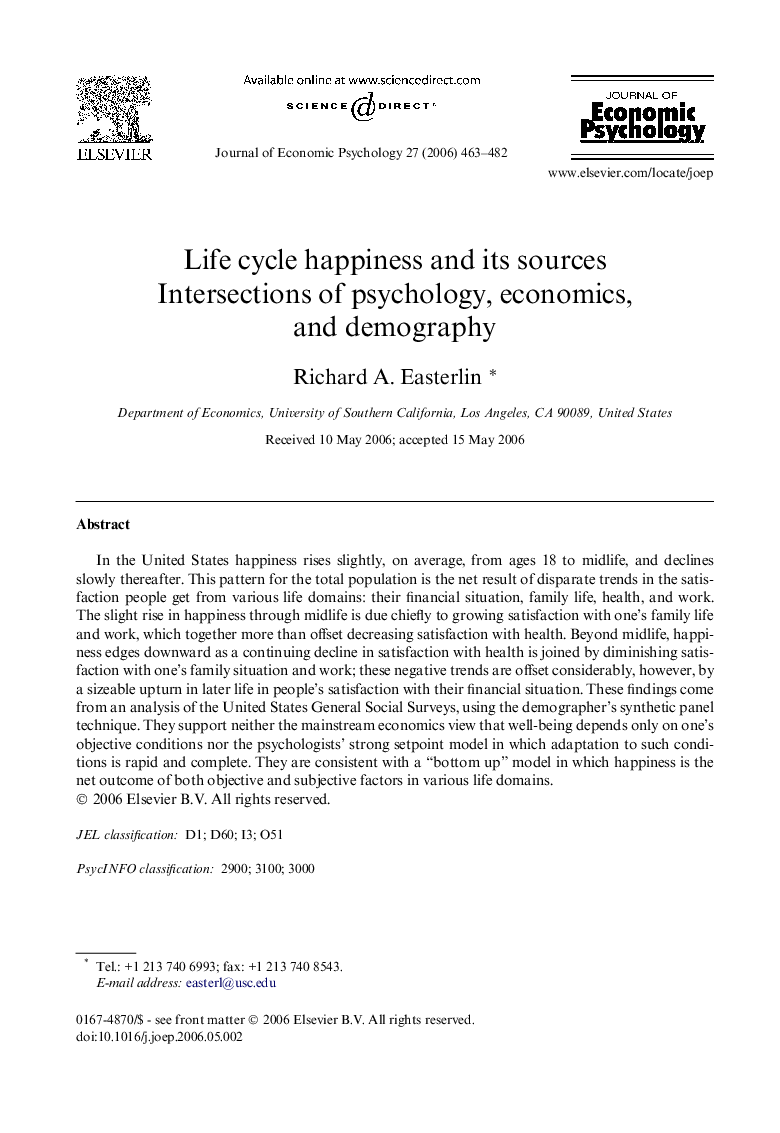| کد مقاله | کد نشریه | سال انتشار | مقاله انگلیسی | نسخه تمام متن |
|---|---|---|---|---|
| 885542 | 912709 | 2006 | 20 صفحه PDF | دانلود رایگان |

In the United States happiness rises slightly, on average, from ages 18 to midlife, and declines slowly thereafter. This pattern for the total population is the net result of disparate trends in the satisfaction people get from various life domains: their financial situation, family life, health, and work. The slight rise in happiness through midlife is due chiefly to growing satisfaction with one’s family life and work, which together more than offset decreasing satisfaction with health. Beyond midlife, happiness edges downward as a continuing decline in satisfaction with health is joined by diminishing satisfaction with one’s family situation and work; these negative trends are offset considerably, however, by a sizeable upturn in later life in people’s satisfaction with their financial situation. These findings come from an analysis of the United States General Social Surveys, using the demographer’s synthetic panel technique. They support neither the mainstream economics view that well-being depends only on one’s objective conditions nor the psychologists’ strong setpoint model in which adaptation to such conditions is rapid and complete. They are consistent with a “bottom up” model in which happiness is the net outcome of both objective and subjective factors in various life domains.
Journal: Journal of Economic Psychology - Volume 27, Issue 4, August 2006, Pages 463–482